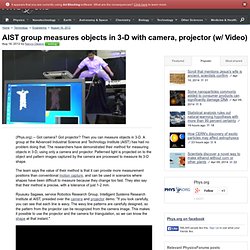

Beats Audio – Leading the Revolt Against Inferior Sound. Admin - Free Zero-Config Remote Desktop Software, Remote Desktop Connection and Remote Access Software. Research team finds way to use photon shape to encode messages. (Phys.org) -- In their quest to find the perfect encryption technique, scientists have often looked to light, or more specifically, photons.

Current techniques allow for sending signals as 1’s or 0’s based on the polarization of individual photons, i.e. they are either vertical or horizontal. But now it appears there is a better way, using the unique shape of photons to represent as many characters as needed, the alphabet, for example. A team of international researchers has, as they describe in their paper published in the journal Physical Review Letters, found a way to use lasers to identify unique shapes of photons and to then recover information that was encoded in them. The problem with using the shape of a photon for encryption, at least up till now, has been that its shape is based on predicting it at a given time and place, and the fact that its shape will be distorted when it’s sent through media, such as a fiber optic cable. AIST group measures objects in 3-D with camera, projector (w/ Video) (Phys.org) -- Got camera?

Got projector? Then you can measure objects in 3-D. A group at the Advanced Industrial Science and Technology Institute (AIST) has had no problem doing that. The researchers have demonstrated their method for measuring objects in 3-D, using only a camera and projector. Patterned light is projected on to the object and pattern images captured by the camera are processed to measure its 3-D shape. The team says the value of their method is that it can provide more measurement positions than conventional motion capture, and can be used in scenarios where shapes have been difficult to measure because they change too fast. Ryusuku Sagawa, service Robotics Research Group, Intelligent Systems Research Institute at AIST, presided over the camera and projector demo.
Sagawa foresees such a system as having use in research about using the body to control things like multimedia, virtual reality, and games. More information: via Diginfo. 'Google on steroids': Scientists create chemical brain. Northwestern University scientists have connected 250 years of organic chemical knowledge into one giant computer network -- a chemical Google on steroids.

This "immortal chemist" will never retire and take away its knowledge but instead will continue to learn, grow and share. A decade in the making, the software optimizes syntheses of drug molecules and other important compounds, combines long (and expensive) syntheses of compounds into shorter and more economical routes and identifies suspicious chemical recipes that could lead to chemical weapons. "I realized that if we could link all the known chemical compounds and reactions between them into one giant network, we could create not only a new repository of chemical methods but an entirely new knowledge platform where each chemical reaction ever performed and each compound ever made would give rise to a collective 'chemical brain,'" said Bartosz A. Grzybowski, who led the work. Grzybowski is the senior author of all three papers.